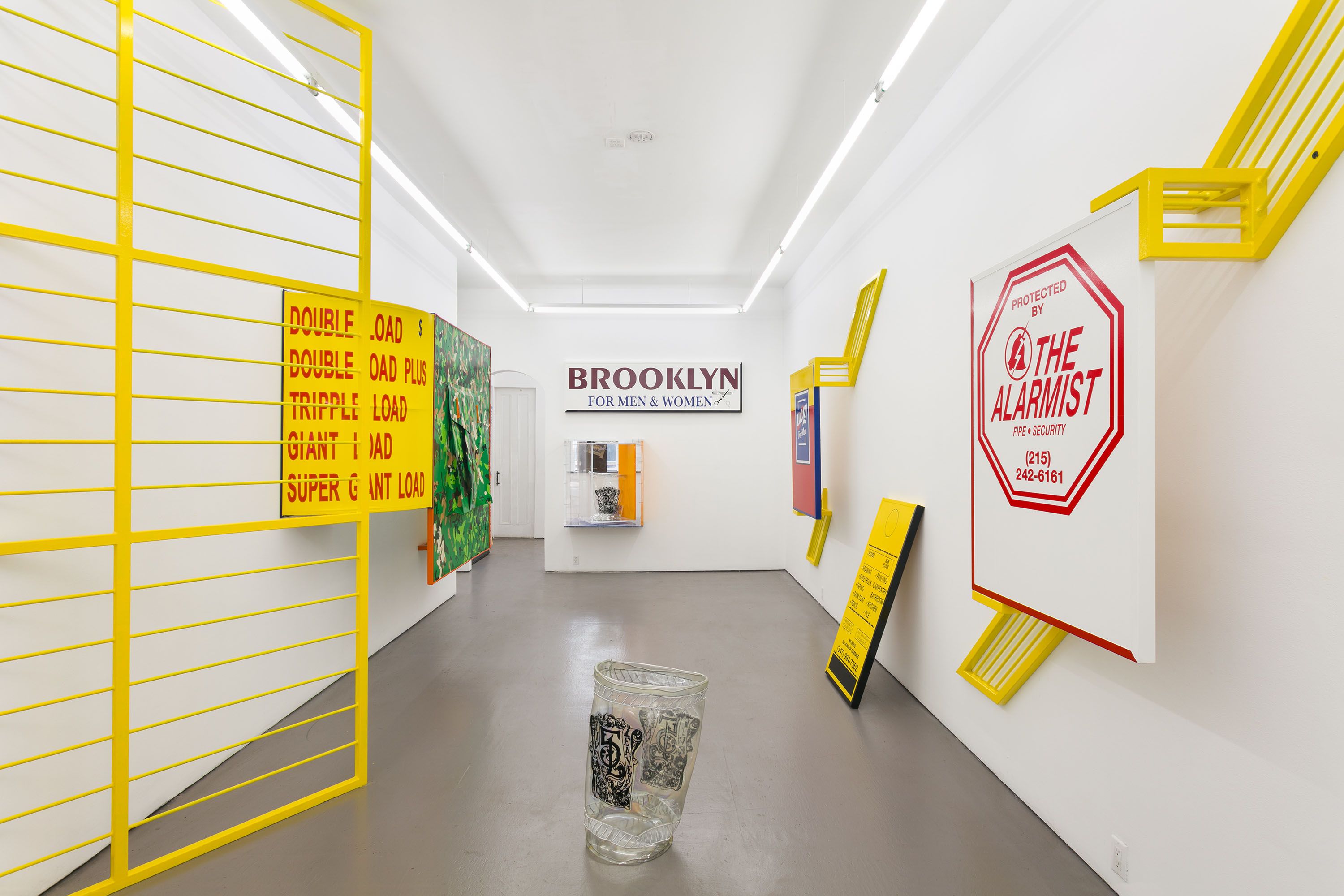
The neighborhood deli and its habiliment are the subject of Brooklyn-based artist Borna Sammak’s new body of work, “Town Crier,” on view at American Medium from May 14 to June 12, 2016. Continuing his longstanding interest in the everyday aesthetics of the bodega, Sammak has constructed an oversized rotating service window, gatelike structures, awnings, store signs, and advertisements all similar to those found on the street corners of Brooklyn, Queens, The Bronx and North Philadelphia. While this exhibition isn’t exactly a departure for Sammak, who in 2013 collaborated with Alex Da Corte to remake a deli inside of Alison Gingeras’s narrow gallery Oko, “Town Crier” is Sammak’s first solo project that doesn’t include video pieces or works on canvas. It is a focused investigation of Brooklyn street signage and the language and materials that construct it.
In upending their regular functions, Sammak transforms the ubiquitous architectural structures of bodegas into parodic art objects. A yellow gate, exemplary of the kind one might find barricading a roll gate of an industrial space, is turned on its side so that it reaches the ceiling, extending a diagonal wall of the gallery and enclosing its hanging fluorescent lighting between its bars. In another visual pun, Sammak enlarges a rotating service window to four times such an object’s usual size and installs it in the gallery’s back wall, such that the window rotates between the gallery and the office space behind (a rotating service window is a Plexiglass structure unique to deli architecture that serves as a safety precaution for late night deli operators, allowing them to serve outside patrons while remaining inside; it is both an interior and an exterior element.) Inside the window, the artist has placed an oversized version of popular Williamsburg cafe Five Leaves’ iced coffee cup onto which he has embroidered their logo with almost affectionately ornamental flourishes to the original printed design. Not coincidentally, Five Leaves’ is located near the Artist's studio where it has a service window exclusively for serving coffee.
The exhibition’s most inscrutable and perhaps absurd component is a giant cargo pocket made of industrial vinyl. While every object in the show has some personal connection with the artist, this is perhaps the most autobiographical work. Sammak has decorated the pocket with a camouflage pattern to mimic the shorts he wears and has worn since adolescence. Yet, in addition to its intimate origin, the camouflage pattern is also in conversation with the history of allover composition, especially as it relates to Sammak’s videos and works on canvas.
Other objects on view, however, are one-to-one replicas of actual awnings, signs, and advertisements found throughout the city. Working with awning fabricators and signmakers, Sammak transplants texts such as “Brooklyn for Men and Women,” “Protected by The Alarmist,” “Lucky for Men” at the same time that he remains faithful to their design.
Abstracted from their advertising contexts, these signifiers begin to either take on altogether new meanings. What could be describing a business or service — i.e. a Laundromat’s litany of “Double Load, Double Load Plus, Tripple Load, Giant Load, Super Giant Load” — quickly delves into the realm of double entendre. Sammak’s ribald quips pay homage to the gay community’s long tradition of investing everyday words with its own meanings to its own ends (i.e. carrying, HAM, headless). “Town Crier” may technically refer to an 18th century officer of the court, but here Sammak puts it to his own poetic use, reclaiming the term as a two-word poem, relaying the matter of fact in tears, a self portrait.
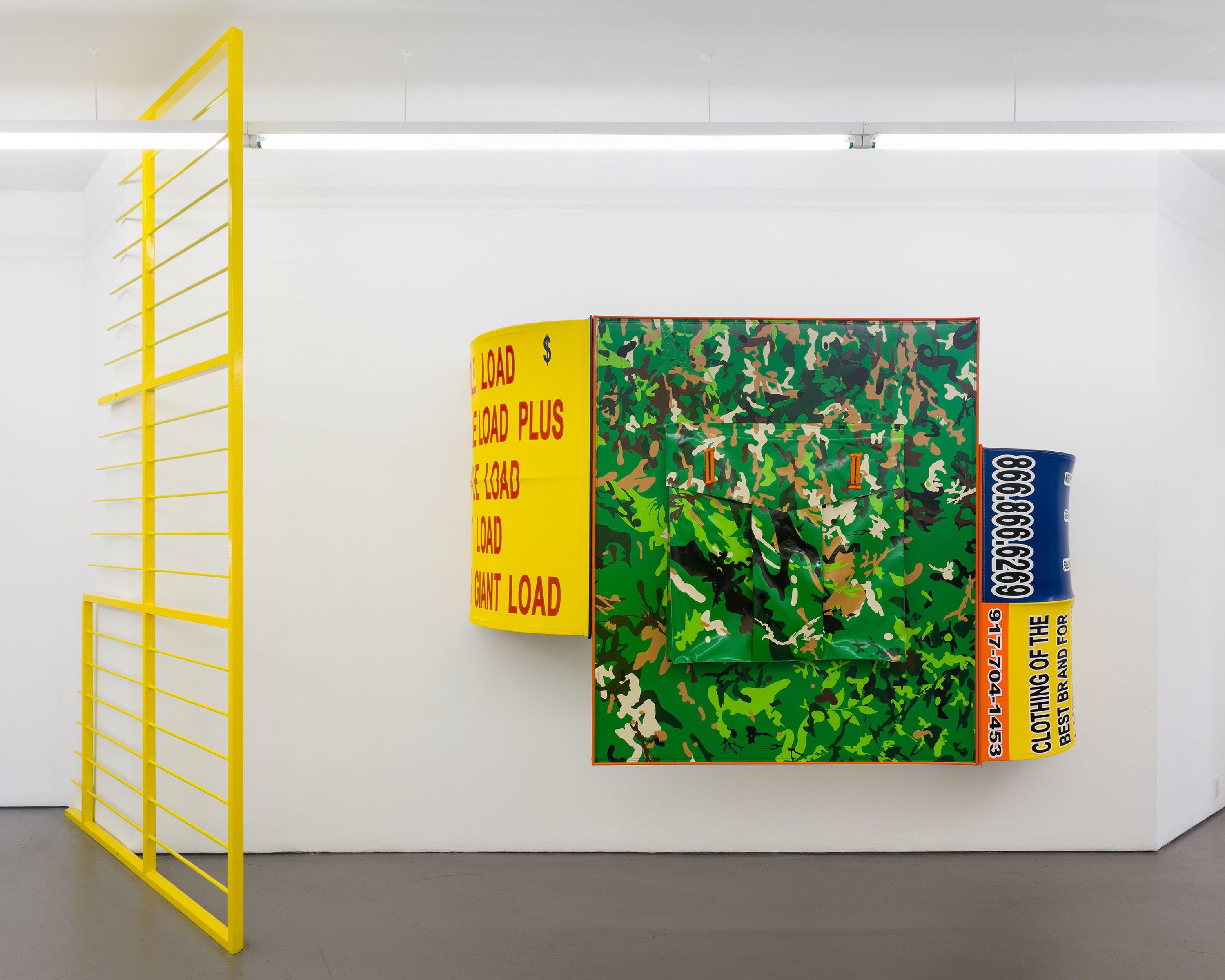
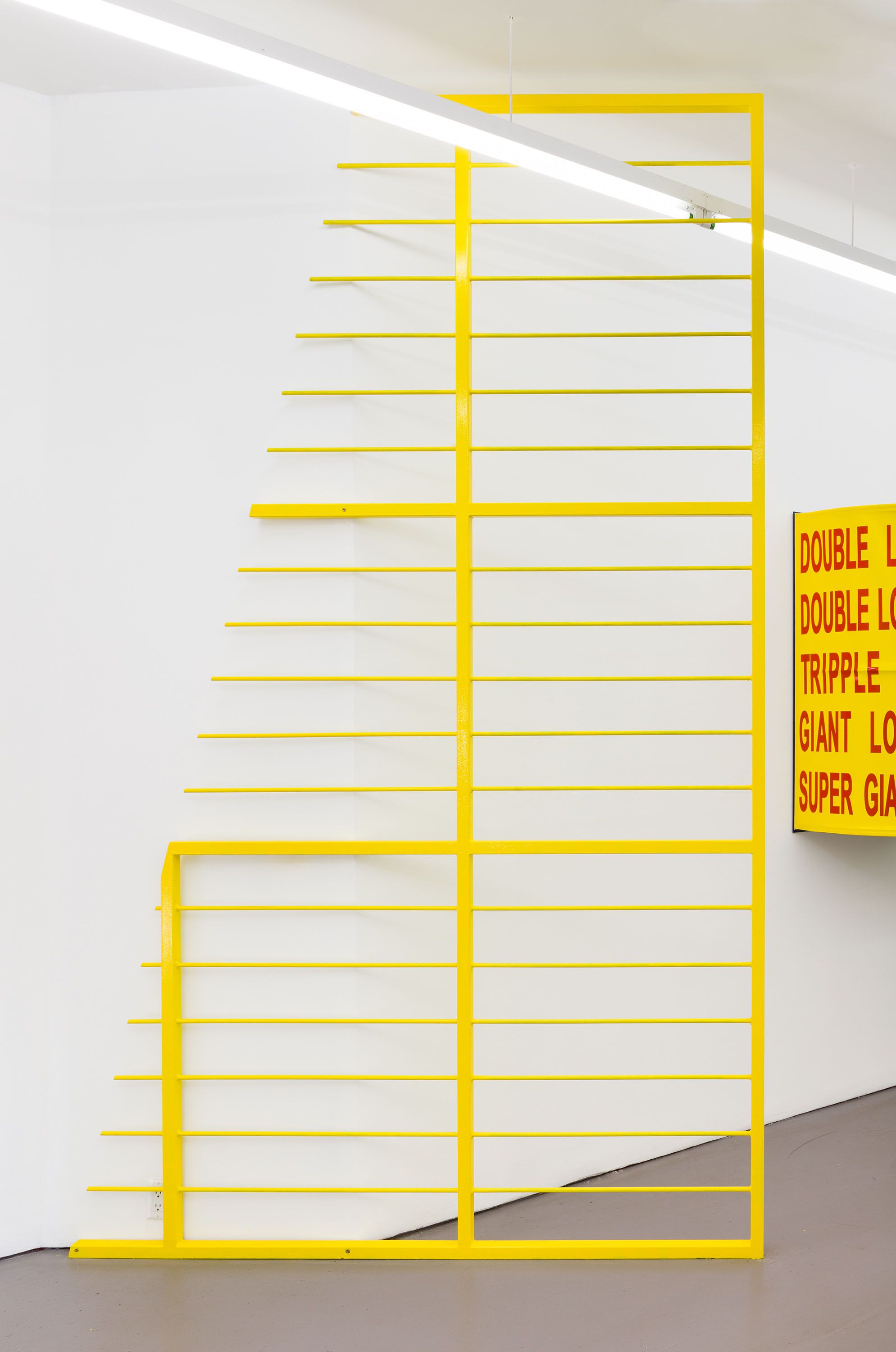
metal, enamel
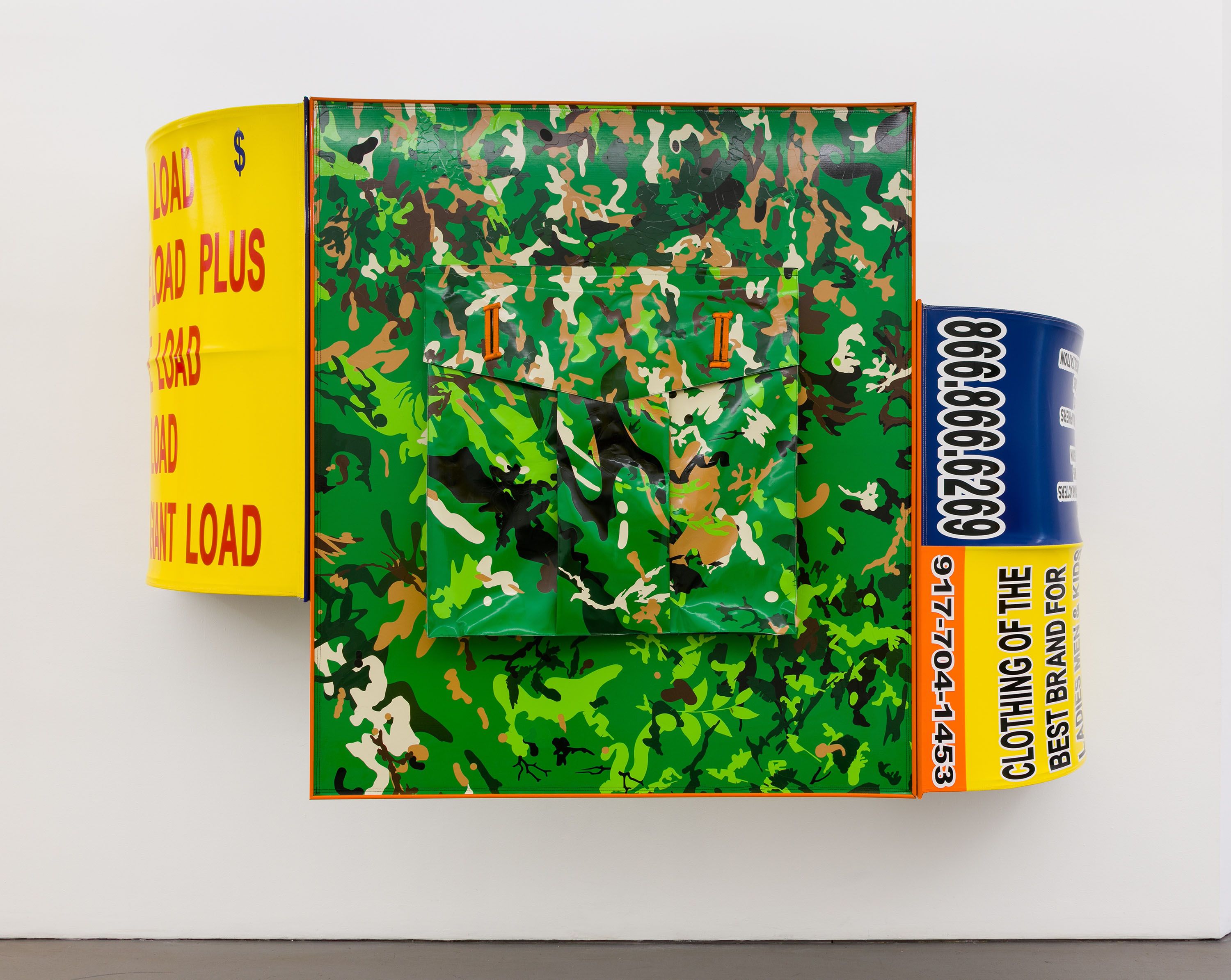
awning vinyl, sticker vinyl, embroidery, aluminum, enamel paint
68.25 x 108.25 x 24.5 in
173.5 x 275 x 62 cm
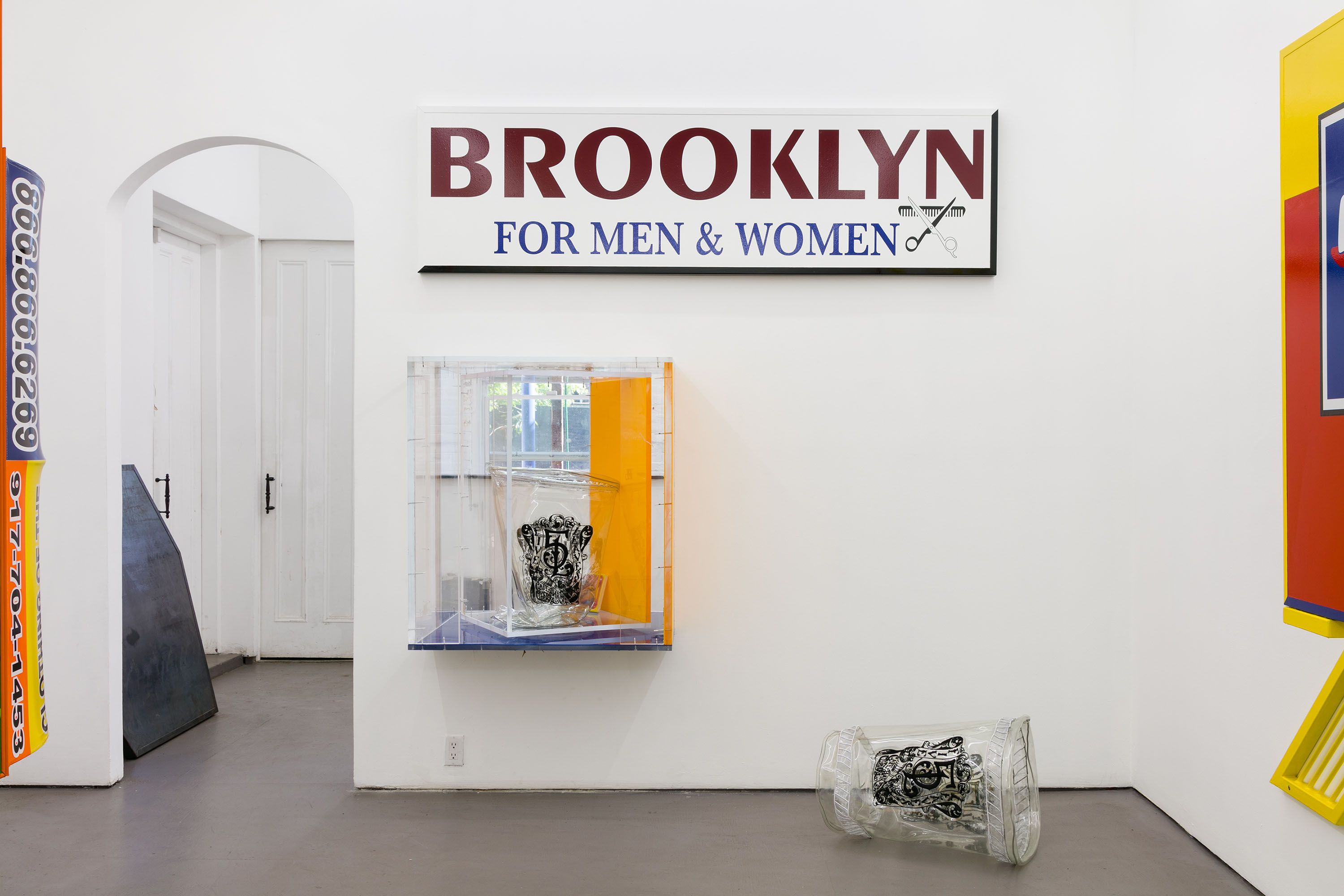
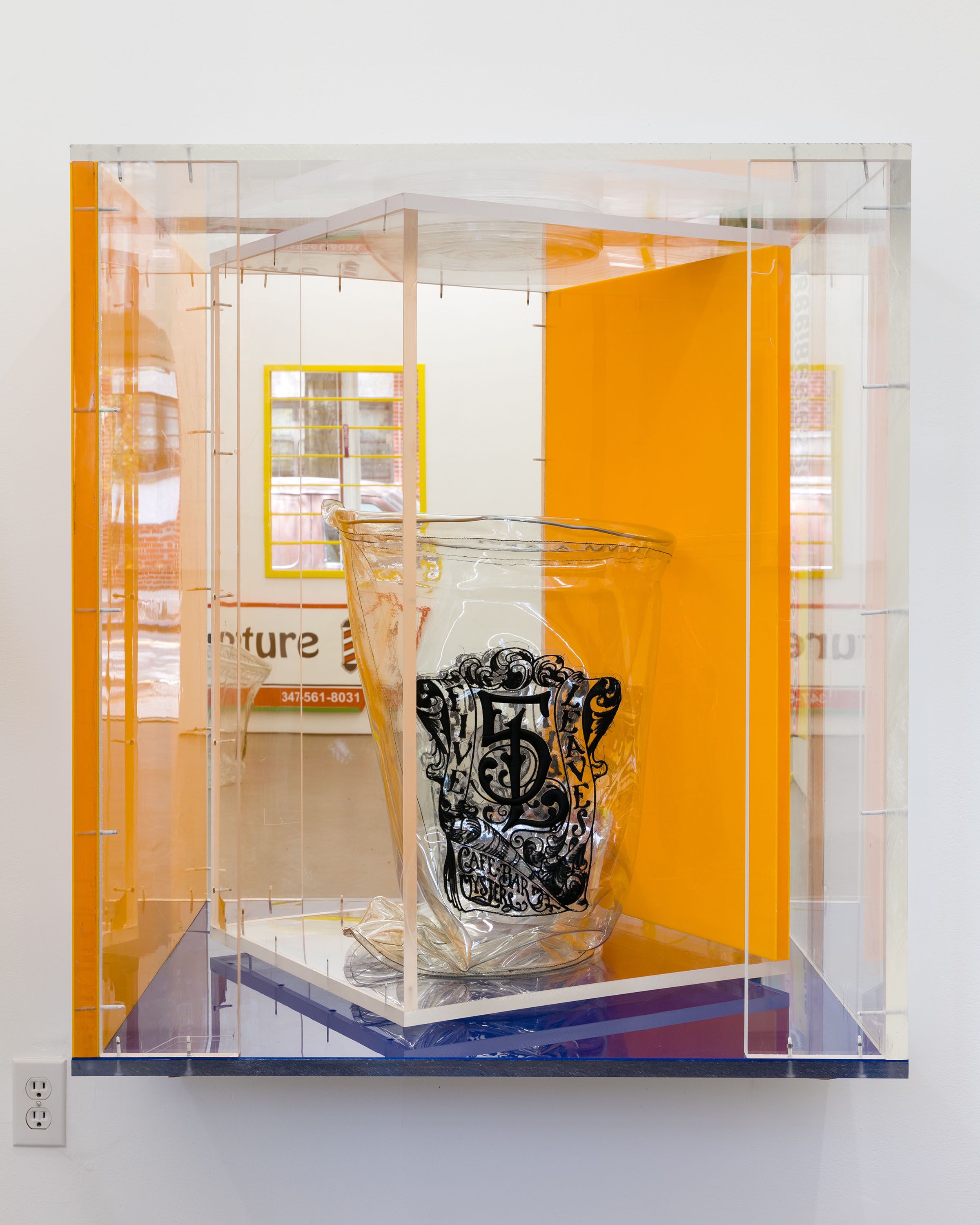
plexiglass, screws, upholstery vinyl, embroidery, plastic
40 x 36 x 36.5 inc
101.5 x 91.5 x 92.5 cm
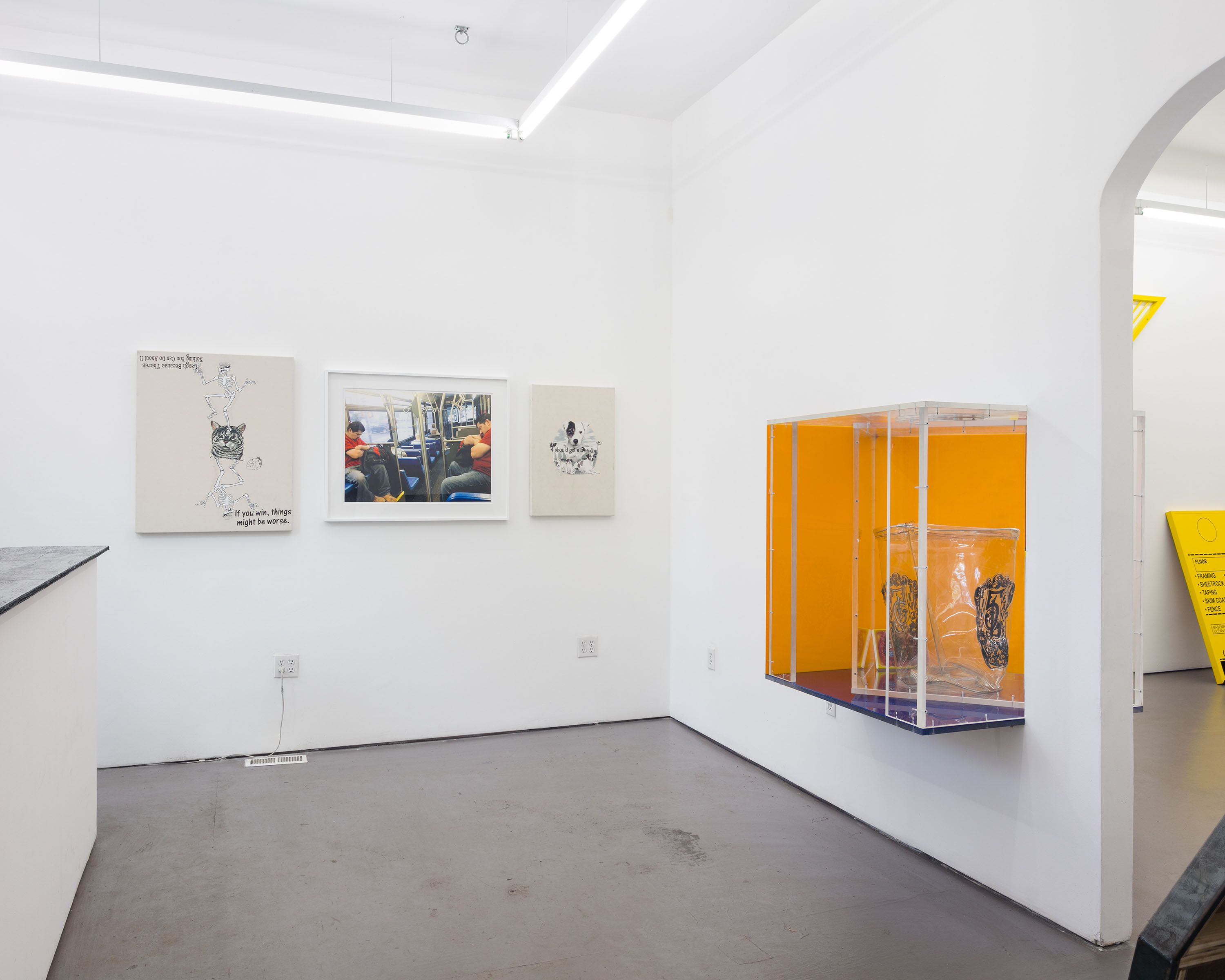
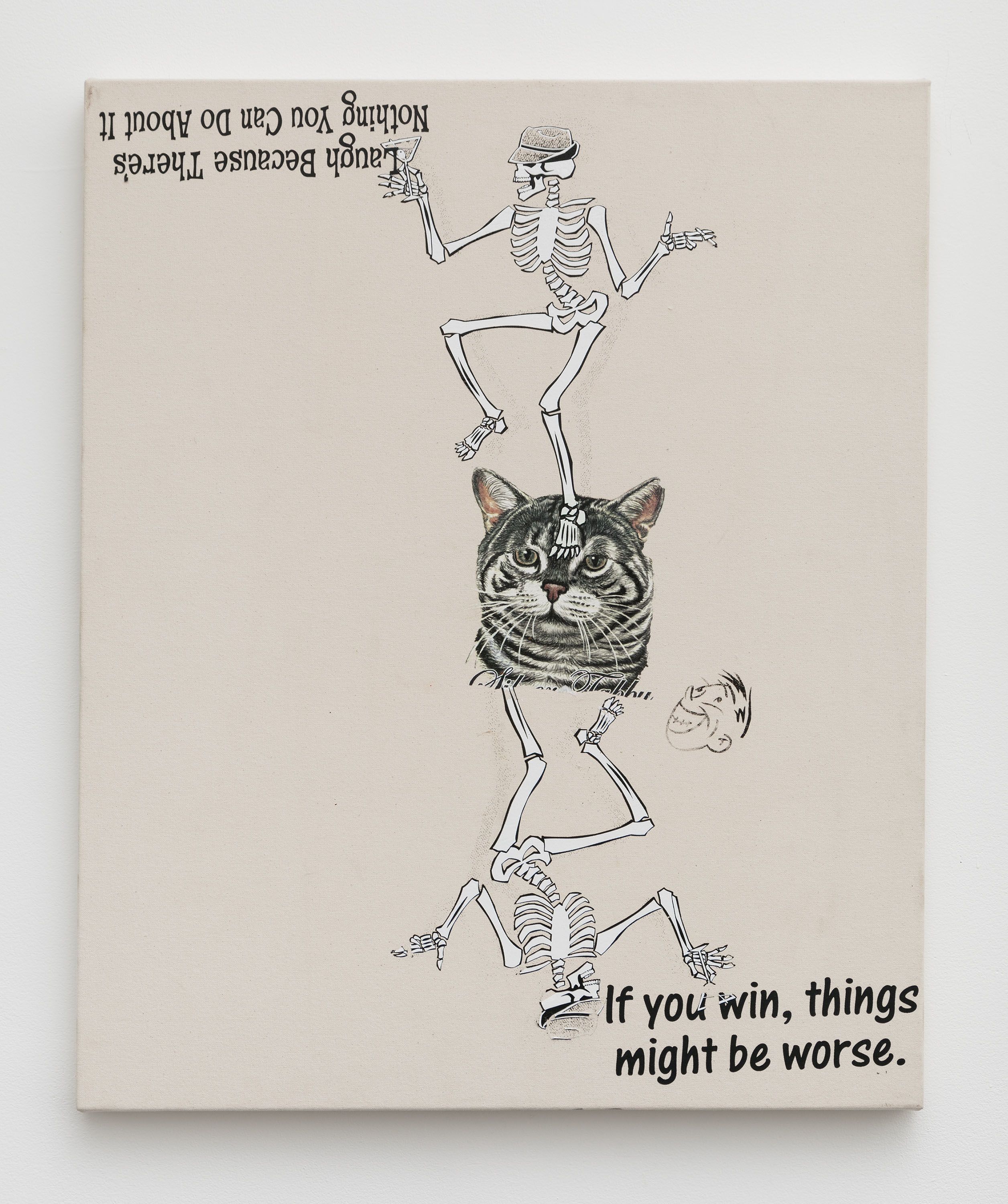
heat applied t-shirt graphics on canvas
32 x 28 in
81 x 71 cm
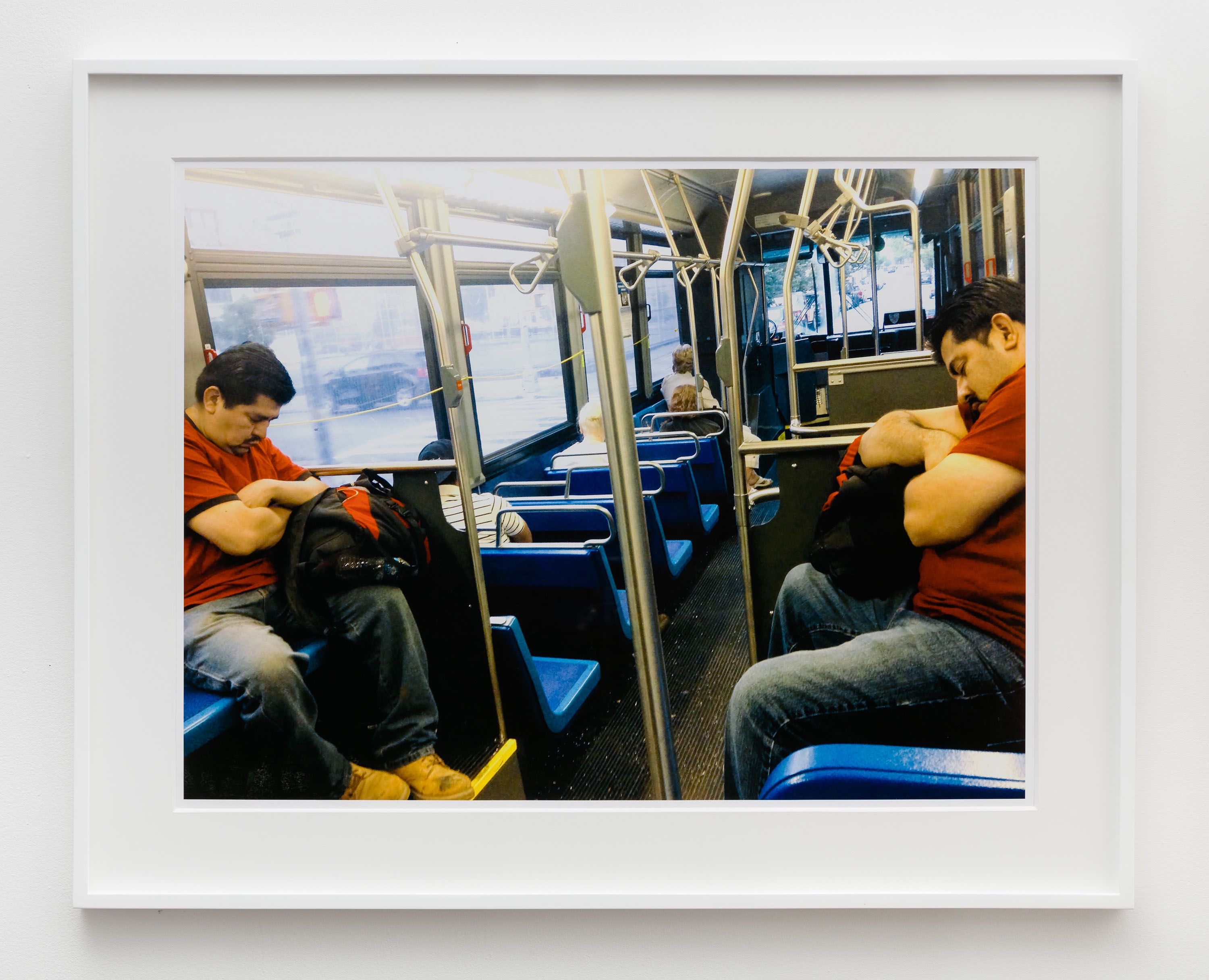
21.5 x 29 in
54.5 x 73.5 cm
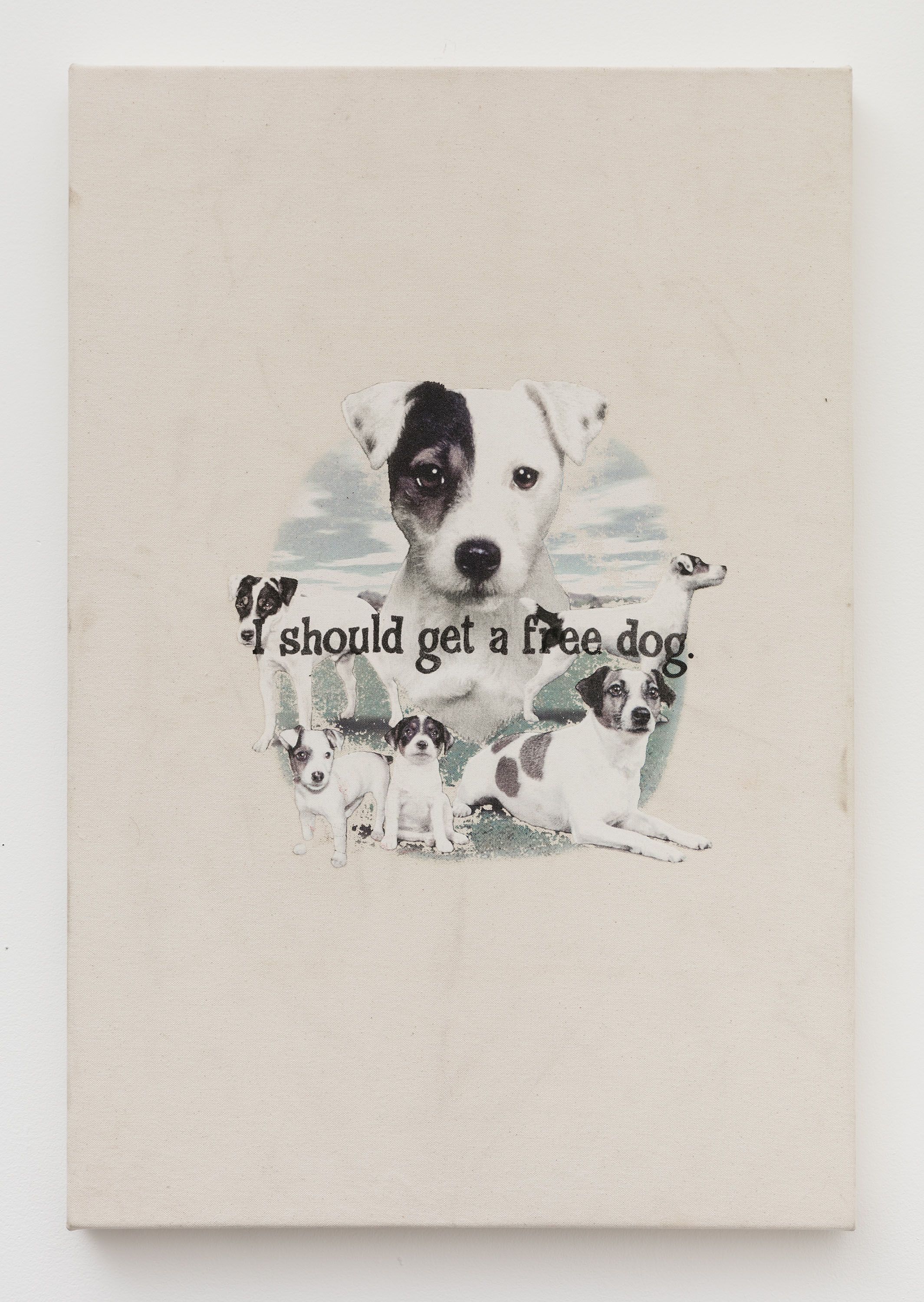
heat applied t-shirt graphics on canvas
28 x 19 in
71 x 48 cm
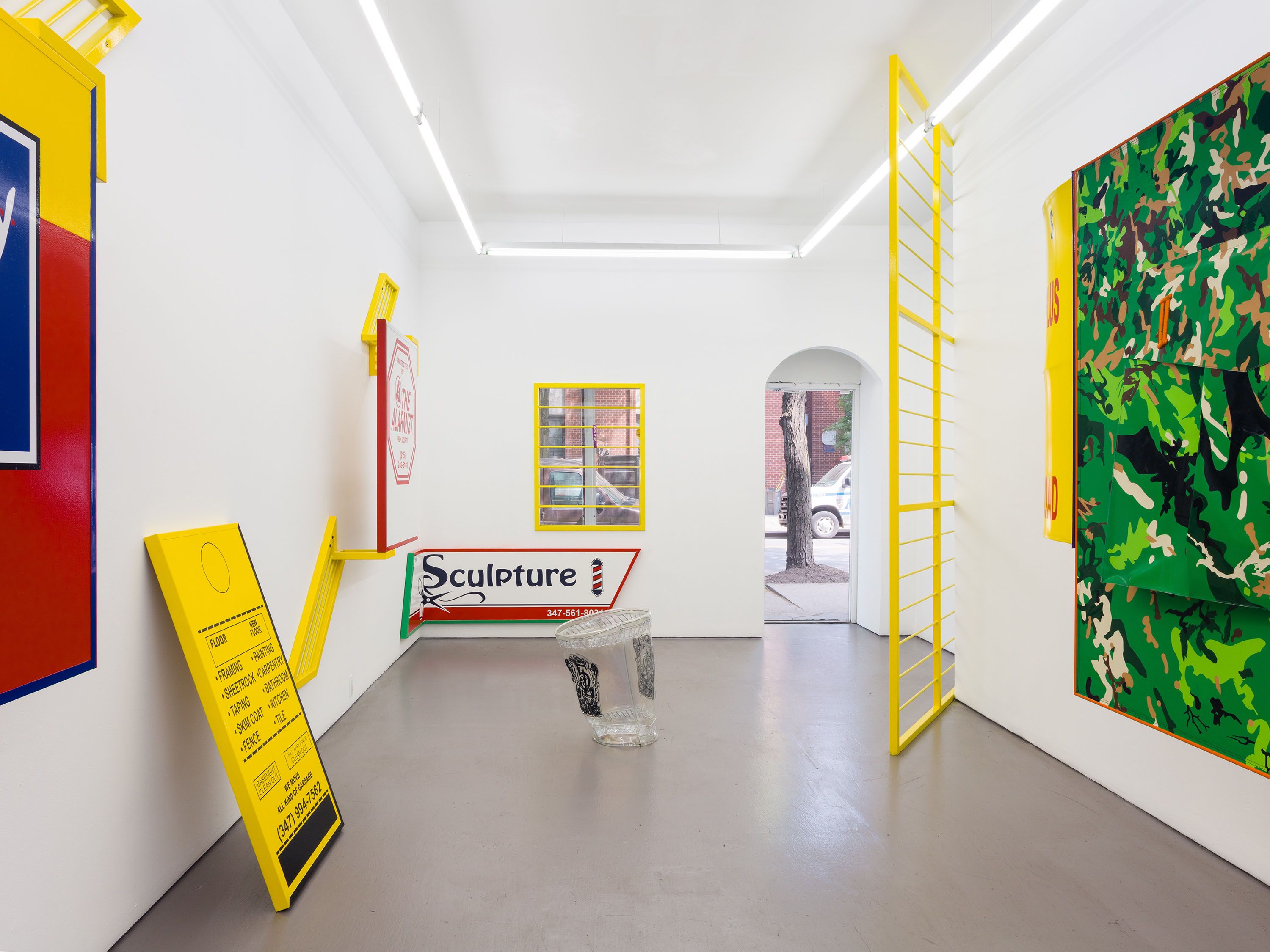
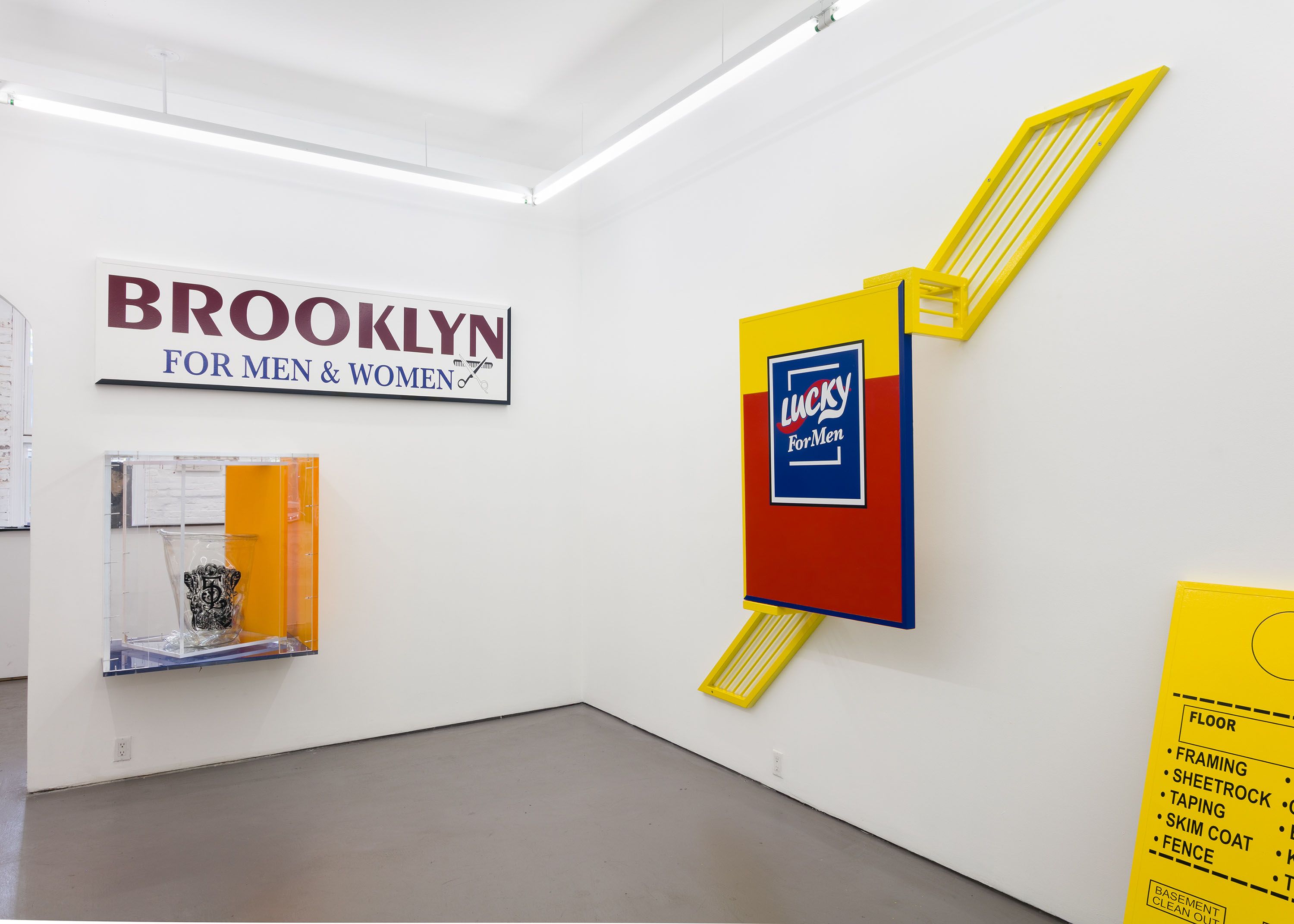

steel, wood, enamel paint, vinyl
24 x 84 x 2 in
61 x 213.5 x 5 cm
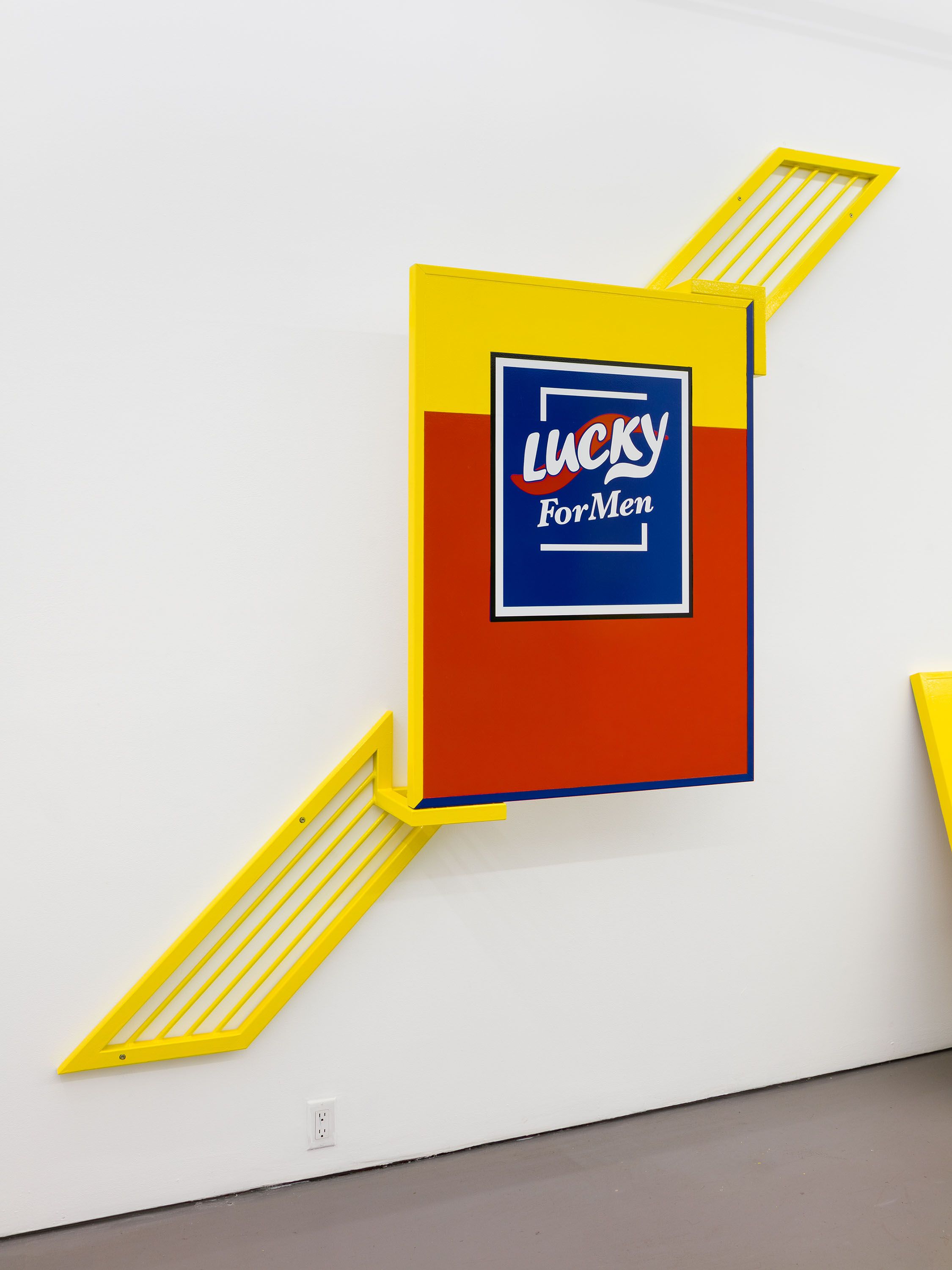
steel, wood, enamel paint, vinyl
97 x 100.5 x 12 in
246.5 x 255.5 x 30.5 cm
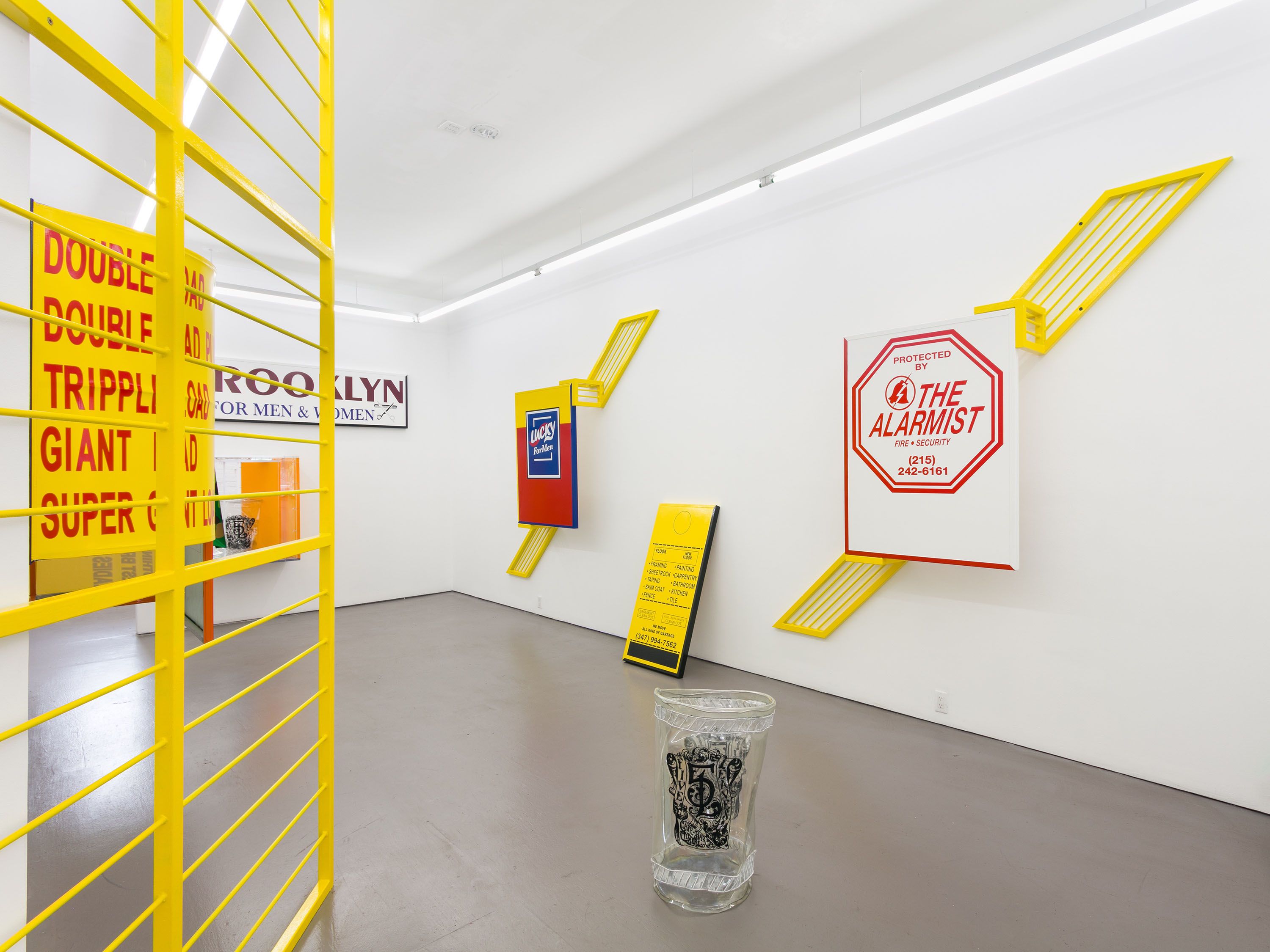
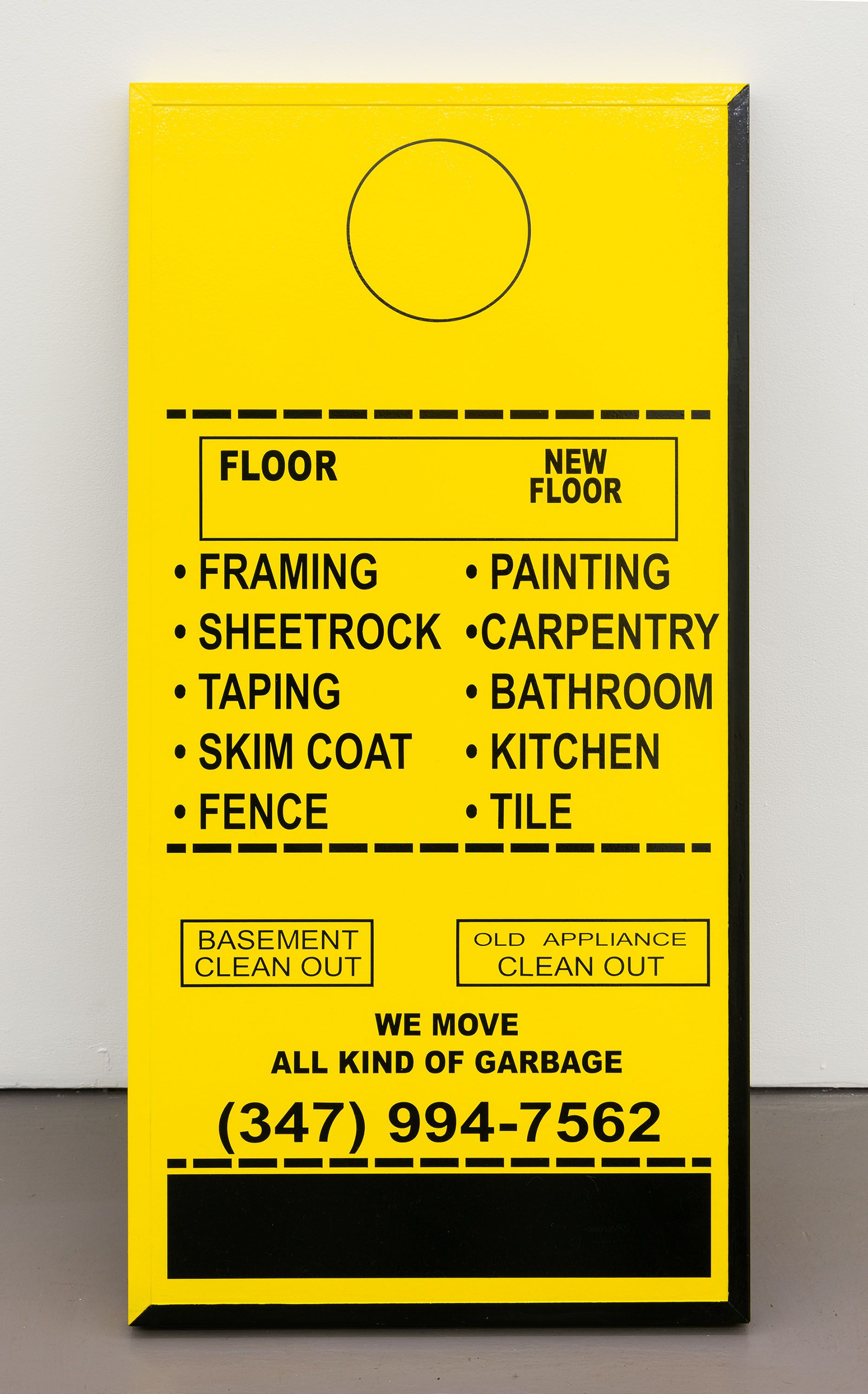
steel, wood, enamel paint, vinyl
48 x 24 in
122 x 61 cm
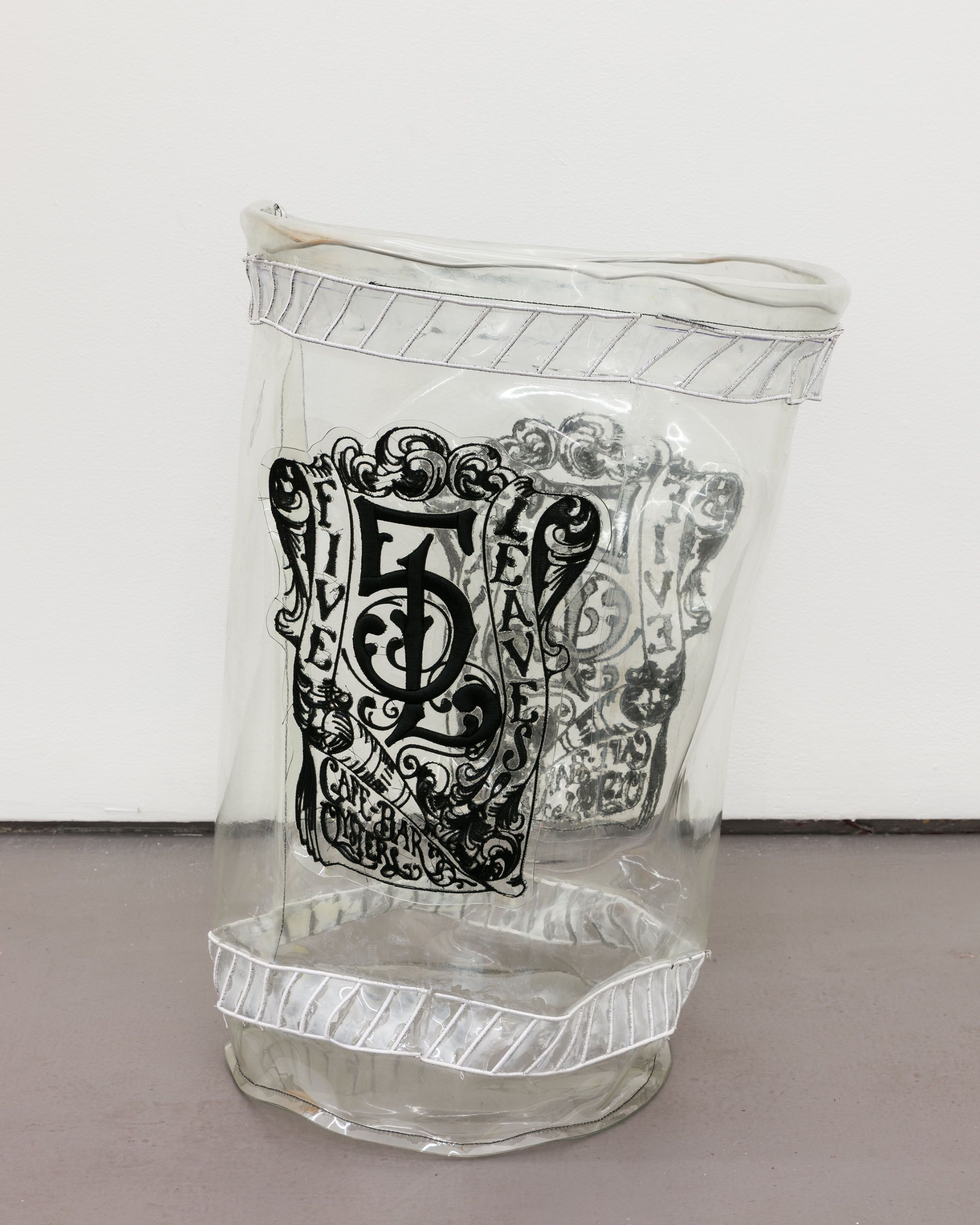
upholstery vinyl, embroidery, plastic
26.5 x 19 x 19 in
67.5 x 48.5 x 48.5 cm
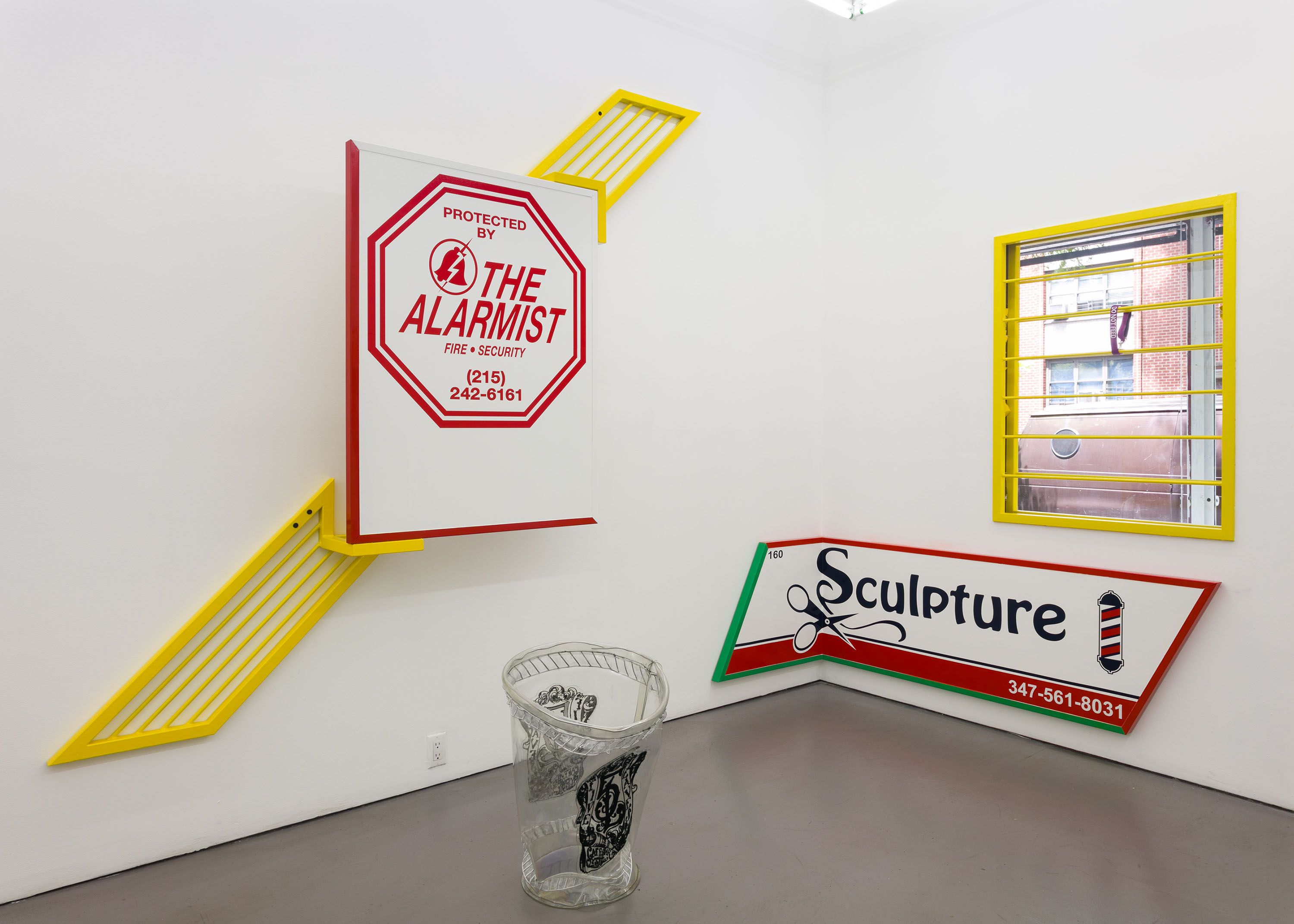
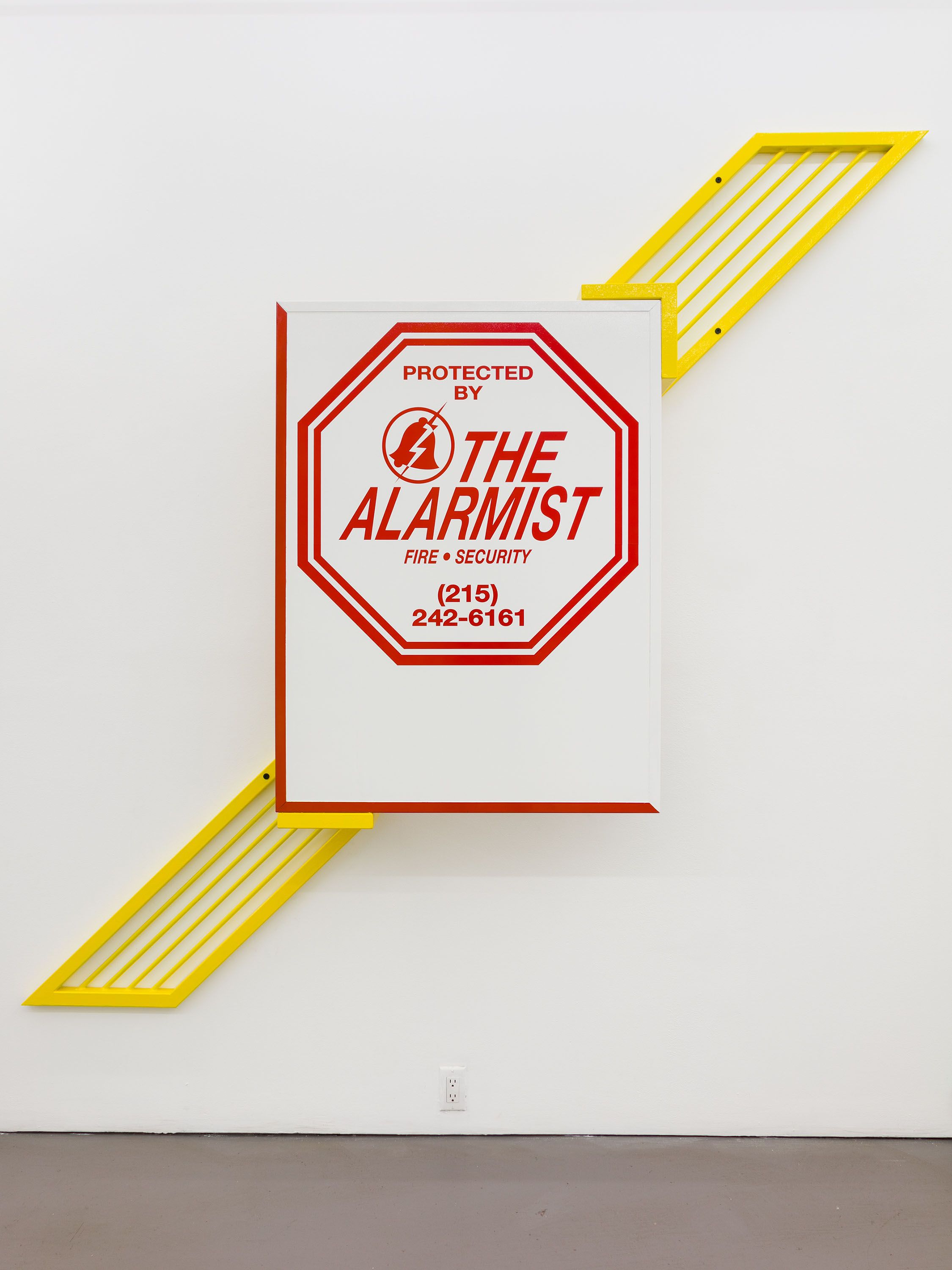
steel, wood, enamel paint, vinyl
97 x 100.5 x 12 in
246.5 x 255.5 x 30.54 cm
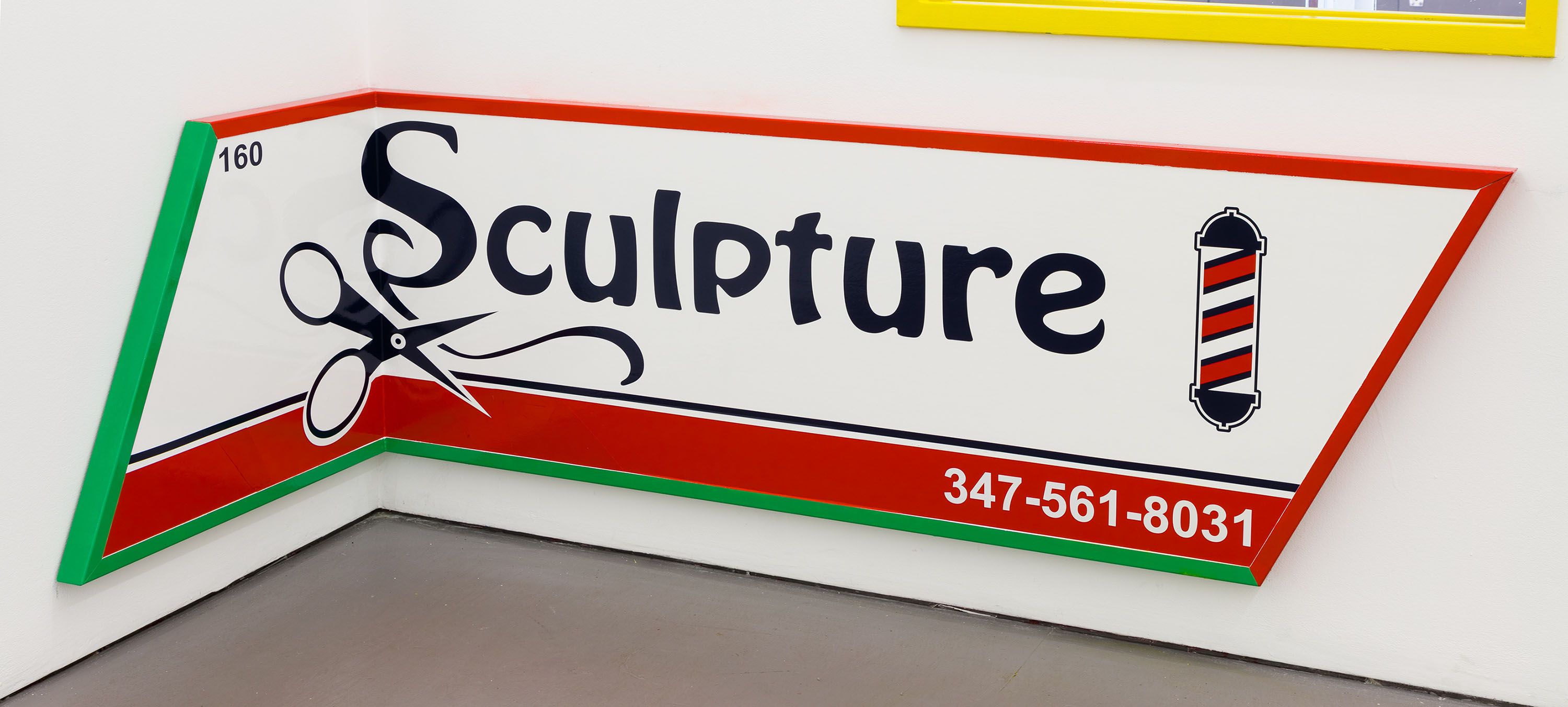
steel, wood, enamel paint, vinyl
24 x 72 x 30 in
61 x 183 x 76 cm

metal, enamel
48 x 36 x 5.5 in
122 x 91.5 x 14 cm
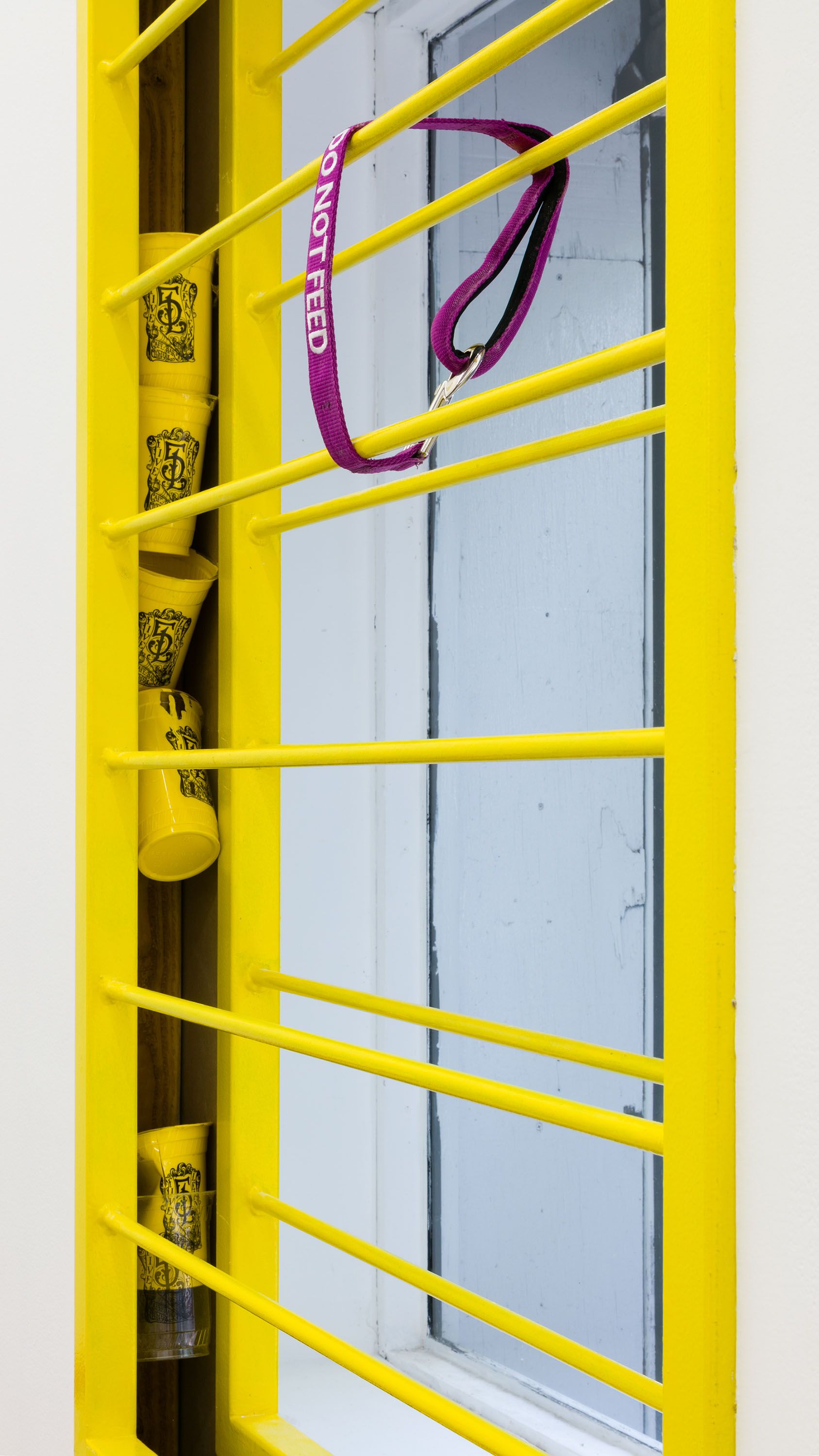
metal, enamel
48 x 36 x 5.5 in
122 x 91.5 x 14 cm